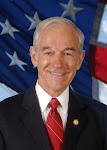By Barbara F. Delo
Tuition, books, food…..gas.
The 2,500 students who park their cars in Fordham’s parking lots every day will have to dig deeper into their pockets this year. For many of the students who drive daily to Fordham, the price of commuting far exceeds the price of books and is inching up on the cost of room and board. Gas prices, in particular, have reached such high levels that both presidential camps have put forth plans to help ease the burden of high gas prices.
In January of 2007, the average price of a gallon of gas nationwide was $2.27. In July of 2007, the average was a record high $4.16 a gallon.
What does this mean to the typical Fordham commuting student? A recent fill up of a midsize car at a Mobil Station in Nanuet, New York cost sixty-six dollars, and the round trip from there to Fordham used a quarter of a tank of gas. It would cost a minimum of $1908.00 for a Fordham student from this area to drive to classes four days a week for an entire school year. Add to that amount $450.00 a year for tolls, $440.00 a year for a parking pass, higher gas usage when the traffic is bad, and an occasional trip for a football game and the price tag for a commuting student from Rockland County is above three thousand dollars a year. Gas expenses for a student from Monroe or Yorktown Heights would be a little higher, for students from Yonkers and White Plains, a little less.
According to the U.S. Energy Information Administration, the price of foreign oil on the world market is far and away the biggest culprit in the increase in gas prices. America imports 66% of the crude oil used in this country primarily from Canada, Saudi Arabia, Venezuela, Nigeria, Iraq, and Mexico. As countries like China and India put more cars on the road, the demand for gasoline world wide increases and drives up the amount oil producing countries can charge. These higher prices are then magnified as the oil moves to the United States because of the recent devaluation of the dollar.
Taxes represent the next highest portion of the price of gas. In 2007 the national average for combined federal, state, and local taxes represented 24% of the total price of gasoline.
Other contributing factors, like natural disasters, that affect the oil infrastructure and investment in the oil supply by speculators have a smaller impact price of oil.
What will our next president do?
Democratic presidential hopeful Barak Obama’s proposal for dealing with the current energy crisis focuses on reducing America’s oil consumption. He proposes to achieve this through an “Apollo like commitment” to new technology that would provide alternatives to oil as our primary fuel and add efficiency to our cars. According to his official campaign website, an “Obama Administration would invest 150 billion government dollars over ten years towards the development of biofuels, plug-in hybrids, and renewable energy.” He also proposes to send government checks to low income families to help defray the cost of higher fuel prices.
Obama’s current plan leaves in place existing bans on new development in either the oil rich Anwar region of Alaska or in our nation’s numerous offshore oil deposits. This plan is, therefore, acceptable to even the most stringent environmentalists. However, it still leaves foreign oil as a significant source of our nation’s fuel until technological breakthroughs succeed in changing the face of the automobile industry. Recently, Obama has shown signs of wavering on this environmental commitment.
Republican presidential candidate, John McCain has a more vigorous plan to alleviate the present gas crisis. His plan would approach the problem on a number of different fronts. Named by his campaign the Lexington project, his goal is to address both short term prices and to make America free of dependence on foreign oil by the year 2025.
Short term, McCain proposes a gas tax holiday that would bring relief from federal taxes to all citizens. He also supports lifting the ban on off-shore drilling increasing domestic oil production within two years. Lower prices could be realized even sooner as anticipated new supplies would decrease the need for holding back large reserves. “We have trillions of dollars of oil and gas reserves in the US at a time we are exporting hundreds of billions of dollars a year overseas to buy energy,” he explains.
As part of his overall plan, McCain would also encourage research on new energy technologies, including biofuels, renewable energy sources, and battery technology. To do this, he would offer tax incentives and bonuses to companies for breakthrough technology. Finally, McCain sees controlled nuclear power and development of clean coal technology as part of a long term plan to free America from dependence on foreign oil.
Both the Obama and McCain plans oppose irresponsible oil speculation.
As the politicians debate the issue in Washington and the presidential candidates argue their policy positions, Fordham commuting students are left battling the higher gas prices here at home. Students adjust their schedules to fit needed classes into as few days as possible. They check websites to find the lowest gas prices and they look for carpools. Some students detour across the George Washington Bridge to Jersey for cheaper gas. A few daring students even park on Fordham road, a risky endeavor as campus security reports a significant number of car break-ins off campus each semester, to avoid the recently increased parking fees. But be wary of this. A better course of action might be to use the new parking plan offered by the school that offers a lower fee and pay-per-usage coupons.
Even our teachers are not immune from the higher price of gas. And for Fordham graduates who nab prestigious jobs in The Big Apple, the pain of commuting may be just beginning.
Saturday, September 27, 2008
Subscribe to:
Post Comments (Atom)






No comments:
Post a Comment